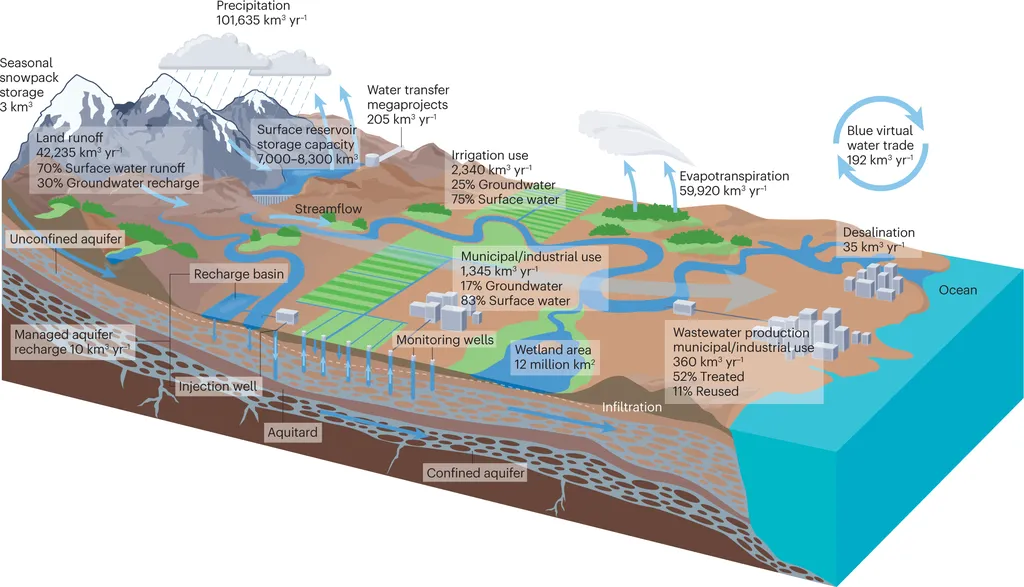In the arid and semi-arid regions of Iran, groundwater is more than just a resource—it’s a lifeline, sustaining everything from drinking water supplies to agricultural fields and industrial operations. Yet, as demand grows, the delicate balance of this vital resource is increasingly under threat. New research published in the journal ‘علوم آب و خاک’ (Soil and Water Sciences) offers a compelling look at how smart management strategies could shape the future of groundwater sustainability, with significant implications for the energy sector and beyond.
At the heart of this study is the Garmsar Plain, where researchers led by M. Golestani from the Department of Water Engineering and Hydraulic Structures at Semnan University have been working to model both the quantitative and qualitative changes in groundwater. Using a combination of GIS, MODFLOW, and MT3DMS software, the team simulated groundwater flow and water quality changes over the period from 2011 to 2013. The results are not just a snapshot of the current state but a roadmap for future management.
The findings are striking. According to Golestani, “A 15% increase in water withdrawal led to a decrease in the water table of up to 8 meters, while a constant withdrawal led to a decrease of 7 meters, and a 15% decrease in withdrawal led to a decrease of 5 meters.” These numbers tell a story of both risk and opportunity. On one hand, unchecked withdrawal could lead to severe depletion, but on the other, strategic reductions could mitigate some of the most pressing challenges.
But the story doesn’t end with quantity. The quality of groundwater is equally critical, especially for agricultural and industrial use. The study found that reducing water withdrawal improved the quality of irrigation water, but it also increased the concentration of some pollutants. This duality underscores the complexity of groundwater management and the need for nuanced strategies that balance immediate needs with long-term sustainability.
For the energy sector, these findings are particularly relevant. Groundwater is often a critical input for various energy production processes, from cooling thermal power plants to supporting bioenergy crops. As such, the sustainability of groundwater resources directly impacts the reliability and efficiency of energy infrastructure. The research highlights the importance of integrating water management strategies into energy planning, ensuring that both sectors can thrive without compromising the resource base.
The study’s validation with field data from 2012 to 2013 further solidifies its credibility, with statistical indicators showing mean absolute error (MAE) in the range of 0.4 to 0.5 meters and root mean square error (RMSE) between 0.5 and 0.6 meters. These metrics demonstrate the model’s accuracy and its potential as a tool for future planning.
As we look to the future, the research by Golestani and his team offers a glimpse into what’s possible. By leveraging advanced modeling techniques, stakeholders can make informed decisions that balance immediate needs with long-term sustainability. The findings underscore the importance of smart management strategies, not just for the Garmsar Plain but for arid and semi-arid regions worldwide.
In a world where water scarcity is an ever-growing concern, this research is a beacon of hope, illustrating how technology and strategic planning can pave the way for a more sustainable future. As Golestani aptly puts it, “The findings of this study illustrate the importance of sustainable exploitation and smart management of groundwater resources in the Garmsar Plain.” This message resonates far beyond the plains of Iran, offering a blueprint for groundwater management that could shape the future of water and energy sectors globally.

